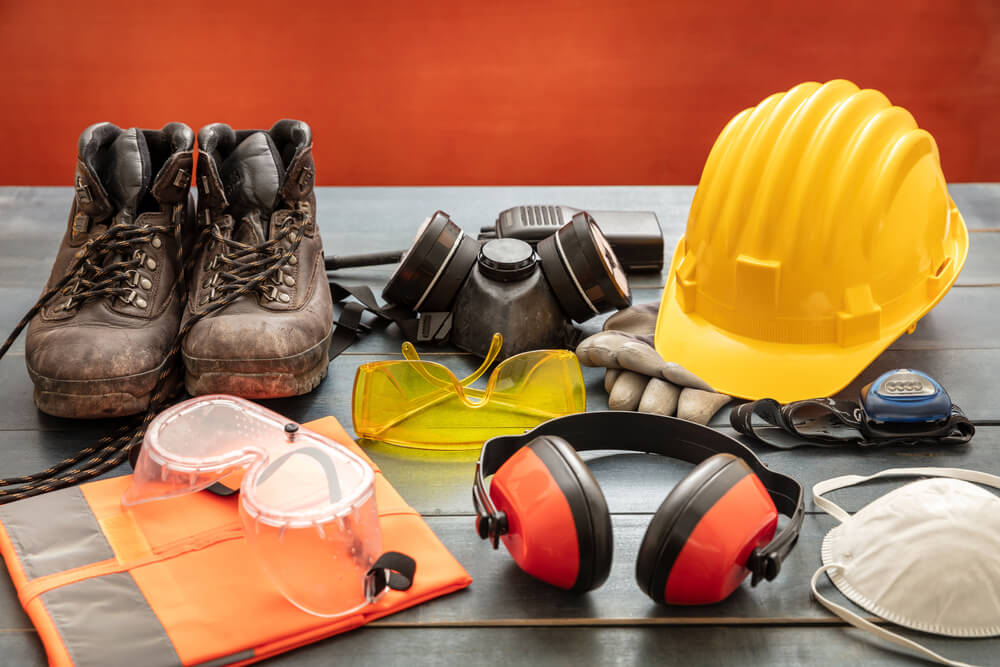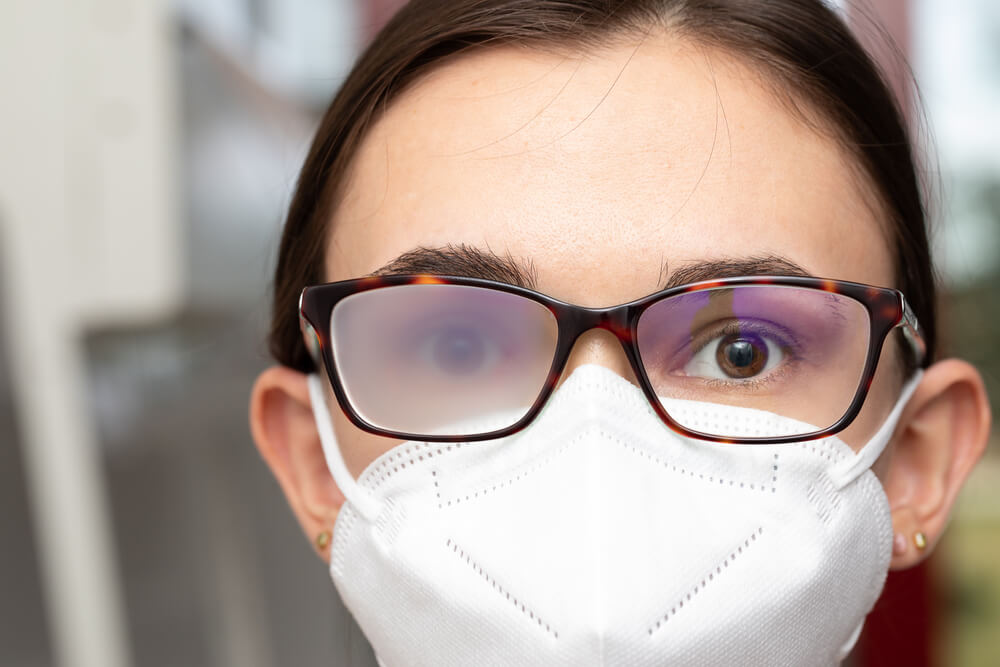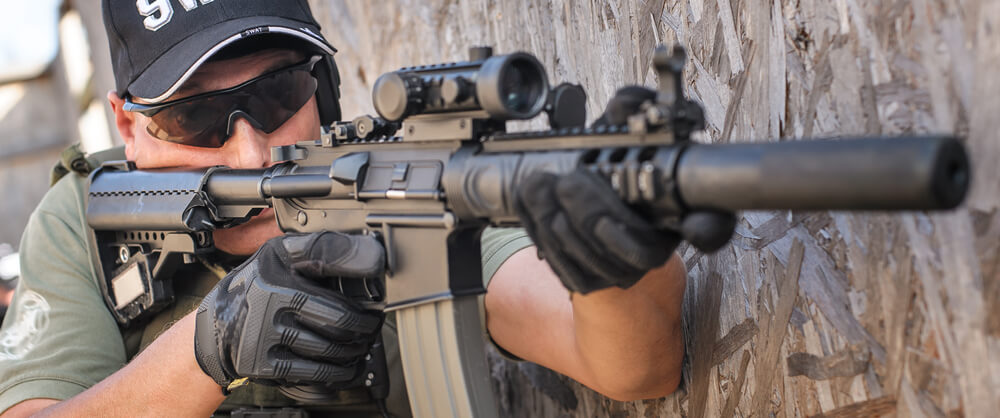
Blog
Construction Safety Spotlight: The Importance of Eye Protection
One of the most popular types of eye protection for construction work is safety goggles or glasses. Your eyes may be injured or perhaps be permanently harmed if you don't wear enough protection. Let's go right to the point: eye injuries are unpleasant and should be avoided. You can be thrown into an immediate state of agony if chemicals or shrapnel pierce your eyes.
Despite the obvious benefits of wearing safety eyewear when working in construction, many workers choose not to do so. It is because statistics from Workplace Eye Injury show that 15% of workplace accidents involve injuries to the eyes. Let's explore the advantages of safety glasses and numerous other construction-related issues in more detail to promote eye protection.
Is It Mandatory to Give Construction Workers Eyewear?
Safety on construction sites is very important. OSHA mandates that construction businesses furnish their workers with high-quality safety glasses as part of their efforts to guarantee the safety of work sites.
Construction companies are required by OSHA standard 1926.102 to provide safety eyewear or other protection for the eyes of employees who may be vulnerable to any of the following risks:
- Airborne particles,
- Acids or caustic liquids,
- Chemical fumes or vapors,
- Molten metal,
- Liquid chemicals,
and potentially harmful light radiation are some examples of these substances. Construction safety eyewear can help these companies and their workers.
Businesses can comply with OSHA regulations and stay out of trouble by offering glasses. Additionally, their staff members can carry out their daily responsibilities as scheduled and shield their eyes from a range of hazards.
Get Construction Safety Glasses Approved by OSHA
The OSHA 1910.133 standard outlines the organization's specifications for safety glasses used in construction. Protective glasses that have been approved by OSHA have undergone testing following this standard.
Check the lens to see if the safety glasses, goggles, or other safety equipment are allowed by OSHA for use in construction. The ANSI Z87. 1-2010 standard from the American National Standards Institute specifies the markings on eye protection that comply with OSHA. The lenses and the safety frame both have these markings.
In the meanwhile, some lenses might be "Impact Rated." These lenses offer side-on eye protection and were completed high-mass and high-velocity testing. They have a "+" sign beside the manufacturer's mark.
Are Prescription Eyeglasses Allowed for Construction Workers?
Construction workers could occasionally need prescription eyewear. Construction workers still require OSHA-approved safety glasses in these situations. Prescription lenses are not indestructible. There can be a limit to the frontal protection offered by these glasses. Therefore, even if workers in construction wear their prescription eyeglasses, tiny particles may still get into their eyes and cause harm.
Over-prescription Armourx safety glasses are available for employees in the construction and other sectors who need prescription eyewear. This guarantees that employees can wear glasses to preserve their vision and prevent eye damage. Of course, educating all employees about eye problems and other risks associated with the profession pays off. You can guarantee that your staff members can keep a secure and effective workstation by placing a top priority on eye safety.
Advantages of Using Safety Glasses
Since our eyes are arguably the most essential sensory organ in our bodies, there are numerous advantages to using safety glasses. Thus, using spectacles to protect them at work is logical.
According to the National Institute for Occupational Safety and Health (NIOSH), around 2,000 American workers get eye injuries as a result of their jobs each day. Numerous of these wounds are severe enough to need medical attention.
The economic impact is another thing to think about. Around 300 million dollars was spent on medical expenses, missed work, and workers' compensation claims as a result of eye injuries. The majority of workplace mishaps are caused by employees not donning the appropriate PPE for the job at hand.
A person's health can be significantly and permanently affected by even small injuries. Although minor injuries might become infected and cause long-term harm, serious accidents have the potential to render workers blind. However, if eye injuries are dangerous, they might be avoided. Indeed, according to OSHA estimates, wearing the appropriate safety eyewear can prevent as much as ninety percent of eye injuries.
How Do Eye Injuries Happen and Why?
Small items in the eye are the primary cause of most work-related eye injuries. These consist of particles such as wood chips, dust, and metal slivers. Further reasons for eye damage consist of:
- Piercings of the eyeball by staples, nails, or metal fragments;
- Blunt-force injuries from falling objects
- Employees bumping into objects with their faces first;
- Chemical or cleaning product splashes
- Burns from heat or radiation sustained when welding;
- Long stretches spent in front of a computer
Under two circumstances, OSHA mandates that workers wear face and eye personal protective equipment (PPE). One is when a job site has threats to eye safety. Another situation is the time it is most likely that a construction worker's safety goggles will save their life.
Typical Construction Safety Concerns That Need for Goggles
Many types of work situations have the following safety issues for eye protection:
- Projectiles made of wood, metal, and dust
- Liquid or gaseous chemicals; radiation, particularly that from lasers, infrared, and ultraviolet light
- Dangerous germs found in bodily fluids like blood
In environments where any one of the aforementioned risks exists, workers may need to wear protective eyewear or other PPE to protect their eyes while performing jobs safely.
Various Forms of Eye Protection for Construction
From simple safety work glasses to specialized eye protection equipment for high-risk vocations, eye safety PPE is available. Typical PPE for construction eyes includes:
Safety Glasses For The Eyes
Work safety glasses contain thicker lenses and a more robust frame than reading glasses. They work well in environments with dust, dirt, and other flying particles. Additional protection can be obtained with wraparound safety glasses and side shields.
Eye Protection
Goggles for construction protect from dust, chemicals, and impacts. These goggles offer complete eye protection from all angles with a safe cover surrounding the entire lens. Both conventional glasses and contact lenses can be put over them.
Helmets And Face Shields
For high-risk tasks where workers may be confronted with heat, chemicals, or bloodborne infections, face protection and helmets are made. Certain helmets are specifically designed for use when welding or handling other hot materials. Helmets and shields should constantly be worn over protective eyewear. When the covering increases or the helmet is taken off, this helps shield the eyes.
Particular Defense
Certain goggles or helmets are equipped with unique filters to guard against radiation exposure. These are employed in laser and welding operations. For complete protection, protective eyewear should be worn below. Machine guards, split or screened workstations, and other technical controls are examples of further eye safety equipment.
Check OSHA requirements to choose the eye safety equipment that best fits your company. To instruct your employees on how to properly wear construction eye protection, you can also enroll them in a safety training course.
Which Safety Glasses Are Appropriate For Use During Construction Projects?
Lens Material
Glass, polycarbonate, and plastic are the most often used lens substances for safety glasses. The most lightweight and best impact-resistant material is polycarbonate, although it degrades and scratches readily. Compared to polycarbonate, plastic is more affordable and robust, but it is also heavier and less heat- and chemical-resistant. Glass is the clearest and least prone to scratches, but it is also the heaviest and can easily shatter. The differences between various materials should be taken into account when choosing the one that best meets your requirements and tastes.
Lens Coatings
Because lens coating adds extra protection or usefulness, it can improve the functionality and convenience of your work safety glasses. For instance, anti-scratch coating prolongs the life of your lenses; anti-fog coating keeps them from fogging up in moist or cold weather; and anti-reflective coating lessens glare and eye strain. Certain coatings can block UV radiation and blue light, which over time can hurt your eyes. The lens coating you choose should take into account your exposure and working conditions.
Lens Tint
The hue of your lens might have an impact on contrast and vision in certain lighting conditions. For instance, clear lenses provide the most accurate color perception and are therefore appropriate for indoor or dark spaces. For bright or outdoor conditions, yellow or amber lenses work well because they minimize glare and increase contrast. For sunny or changing settings, green or gray lenses work best since they minimize brightness and eye strain. Some hues, like purple, red, or blue, can be used for particular purposes or have particular effects, such as enhancing depth perception, obstructing infrared light, or raising attentiveness. The tint of the lens you chose should enhance your comfort and visibility.
Style of the Frame
Coverage, Fit, and ventilation of your safety glasses can all be impacted by the frame style. Full-rim, semi-rim, and frameless are the three primary categories of frame styles. A complete frame surrounds the entire lens of full-frame glasses, providing maximum stability and protection at the expense of minimum ventilation and flexibility. Half-frame glasses only feature a frame around the top half of the lens, which provides less stability and protection but more ventilation and flexibility. The greatest ventilation and flexibility are provided by frameless glasses, which have no frame at all and simply a bridge and temples for support and stability. After weighing the benefits and drawbacks of each frame design, choose the one that best suits the shape and size of your face.
Safety Requirements
The degree of shielding and quality your safety glasses provide against different impacts and hazards is indicated by their safety standards. Safety standards vary by nation and area; for example, ANSI is used in the US, CSA is used in Canada, EN is used in Europe, and AS/NZS is used in Australia and New Zealand. To find out what requirements and tests your safety glasses have passed, look at the marks on them. In addition, you must go by the guidelines and suggestions provided by your client, employer, or the industry regarding the safety criteria for your eyeglasses.
Individual Choice
Finally, while selecting your safety glasses, individual choice is also crucial. Selecting safety glasses that fit well with your other PPE is important. When purchasing safety glasses, make sure they match your other PPE, such as masks, ear muffs, and helmets, and are comfortable and stylish. You should also think about the upkeep of your safety glasses, your availability, and your budget. To see how safety glasses fit and feel on your face, try on a variety of types and brands. If your safety glasses require prescription or corrective lenses, you should also speak with your optometrist for prescription safety glasses.
Does Your Company Require A Safety Eyewear Program?
Every workplace safety eyewear program should include eye safety as a core component. All OSHA rules for eye protection should be covered in your workplace safety manual, including instructions on when to use construction eye protection.
- How and where employees can obtain the PPE eyeglasses they require;
- What kind of eye protection is appropriate for the job;
- The repercussions of failing to wear eye safety equipment.
Make a note of every possible eye hazard so that the appropriate PPE is chosen for each task. Next, consider how these risks are encountered by employees. Take into account if any other PPE is being used. PPE eyewear must fit comfortably and snugly. If not, it ought to be movable to offer complete eye protection. Eye protection shouldn't obstruct employees' peripheral vision.
How to Encourage Employees to Support Eye Safety?
Many employees dislike using safety glasses. While some claim eye protection is bothersome, others believe it obstructs their eyesight. Others, however, believe that wearing eye protection is "uncool."
Providing workers with fashionable and comfortable eye protection would boost employee adoption rates. It will also assist in reducing the likelihood of eye damage. Eye protection glasses should be comfortable enough to wear all during a shift, especially in warm weather. Comfort-enhancing features include flexible temples; brows that are cushioned; soft gel nosepieces; padded nose bridges; vented frames; and lenses that can be changed to different angles. Over time, the technology underlying safety glasses for the construction sector has seen significant development.
Workers may prefer anti-fogging features and foam-surrounded lenses over basic models. They offer increased comfort as well as additional defense against foreign particles. It is also more common for employees to sport fashionable eyewear. Employees can customize their protective eyewear (PPE) with wraparound styles, mirrored lenses, and vibrant colors. You'll have a better chance of encouraging employees to take protective measures if you provide a variety of choices.
Comfort and style are crucial, but safety comes first for eye protection. For example, impact-resistant and UVA/UVB-blocking lenses are examples of eye protection characteristics that can significantly improve worker well-being. Additionally, it is not recommended to use eyeglasses or anti-fog protective goggles with toughened glass or acrylic-based lenses in impact settings.
Furthermore, it is not advisable to wear these kinds of eye protection in places with a lot of garbage. Scratch-resistant polycarbonate lenses are the finest option in high-impact job situations.
- Encourage the use of safety glasses at construction work
- It takes a team to ensure eye safety, and employers must do the following:
- Follow all OSHA eye protection rules
Assessing eye dangers at work; removing or minimizing them where practical; providing appropriate safety eyewear and ensuring that employees wear it. In the meantime, employees must:
- Recognize the eye risks related to their professions;
- Wear the appropriate safety glasses for construction to guard against on-the-job hazards.
- Maintaining the condition of their safety glasses and replacing those that are broken
- Employers and employees must be aware of what to do if an eye injury happens.
The first step in doing this is getting medical help as soon as you can, especially if you have impaired vision or eye pain. Until medical assistance arrives or the person is transferred to an emergency room, administer basic first aid.
If an employee has chemicals in their eyes, they should rinse with water for a minimum of fifteen minutes. If they wear contact lenses, they should take them out before flushing. Don't cover the eye with a bandage or try to get rid of the substance with other materials.
Don't rub your eye if you get particles in it. Rather, try to remove any particles from the eye using tears. Use an over-the-counter tear remedy if not. To get rid of any debris, gently raise the upper part of the eyelid up and down on the lower eyelid.
Final Words
Overall, construction workers benefit from Guardian safety eyewear. Besides shielding their eyes from harm that might make them more prone to infections, the wearer of safety glasses is also safeguarding their vision from these hazards. You know, all it takes is an eye to completely alter your life. Take no chances. While on-site, put on your prescription z87 safety glasses.
Note: The information in this article is solely intended for general educational purposes. It should not be assumed that the material provided here is legal counsel for your particular set of facts or circumstances. It is not meant to be legal guidance.





Leave your comment